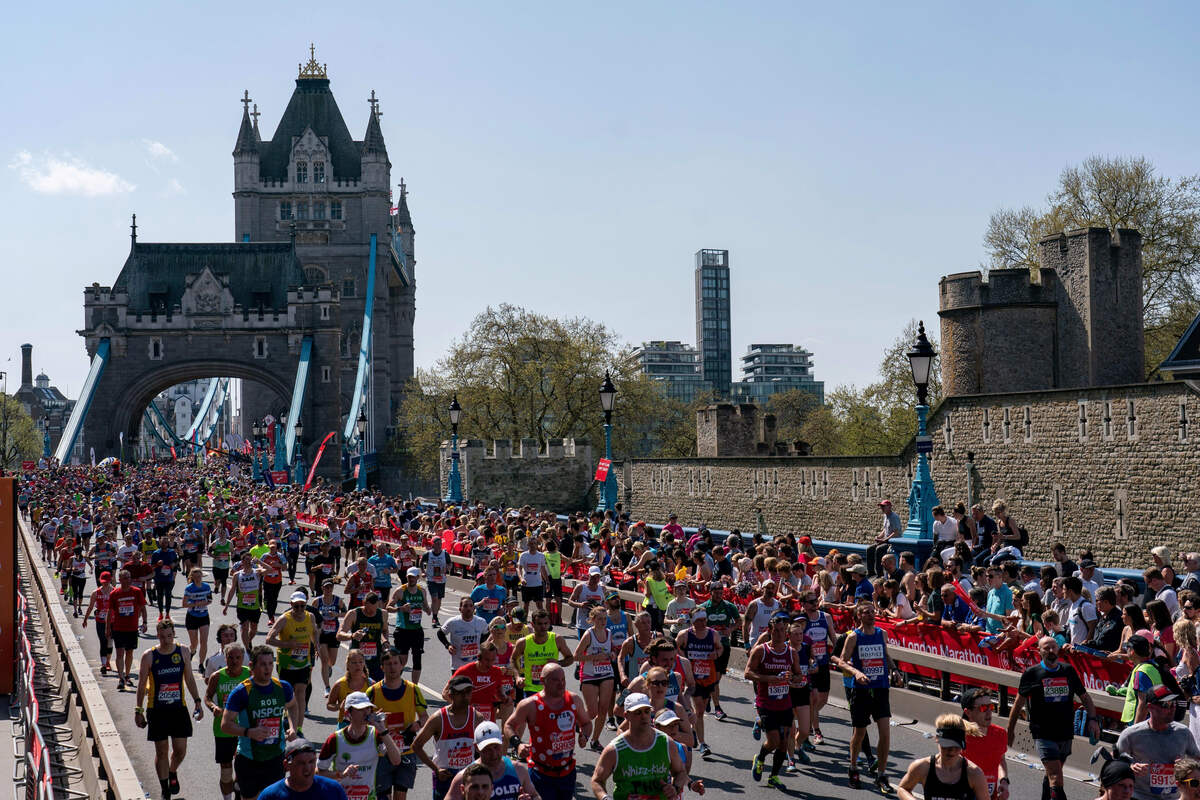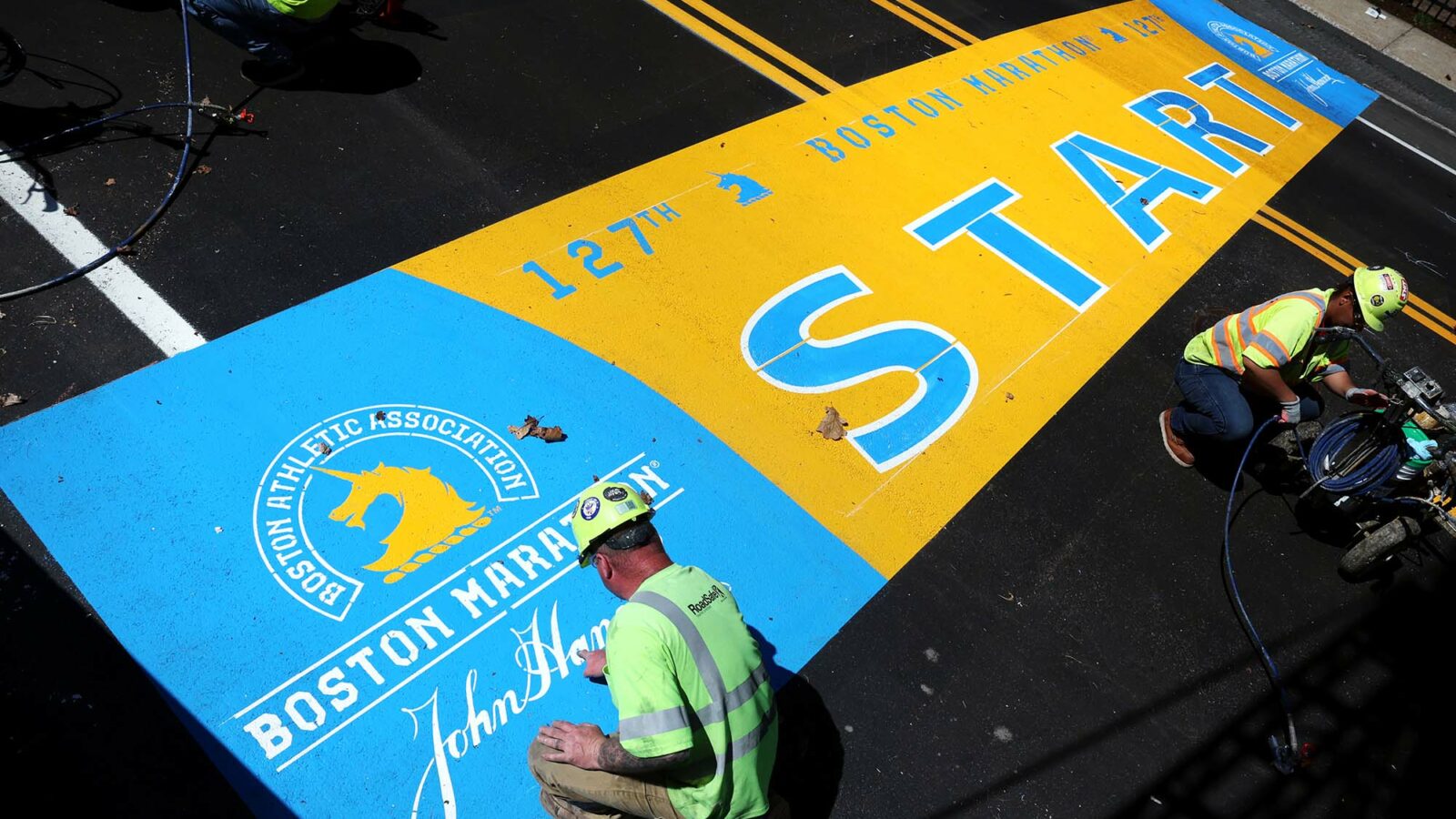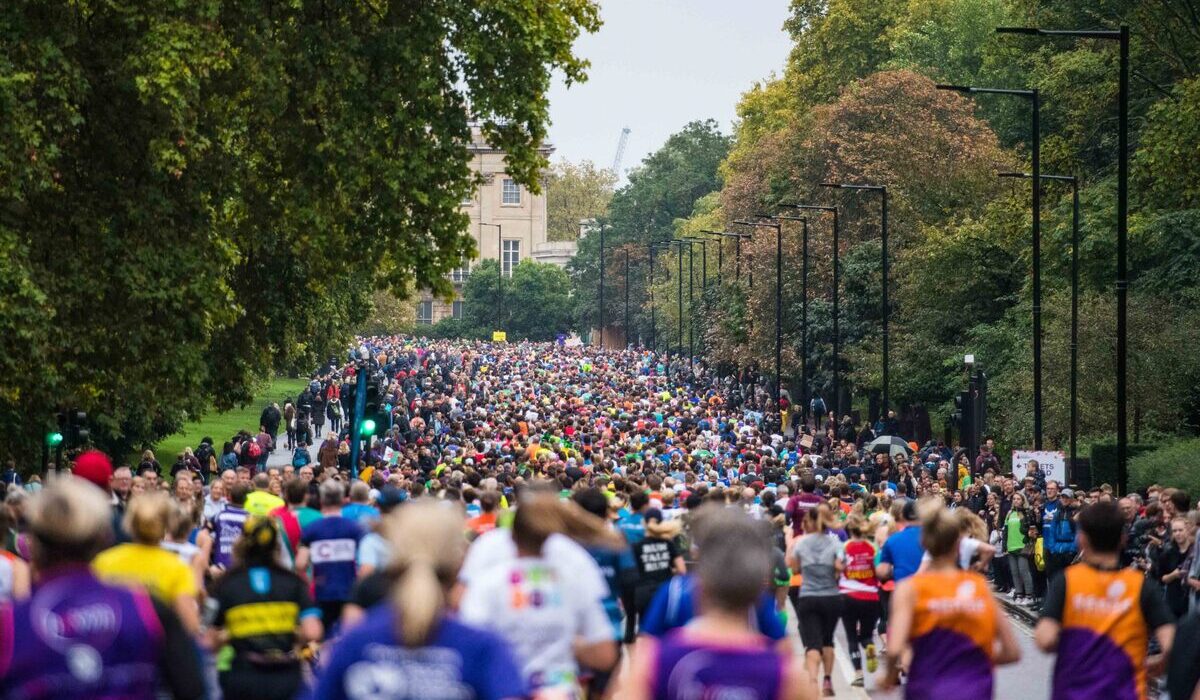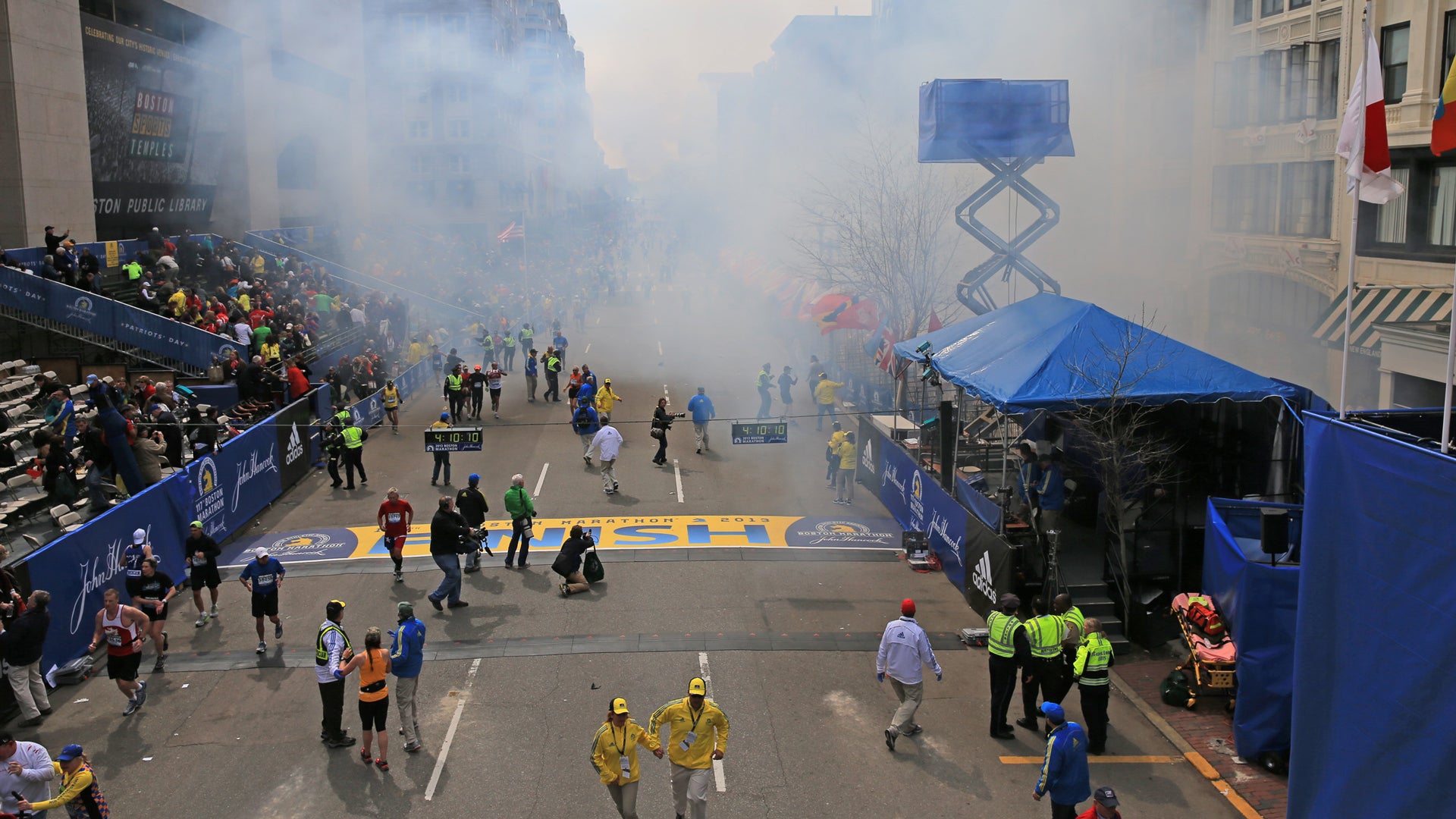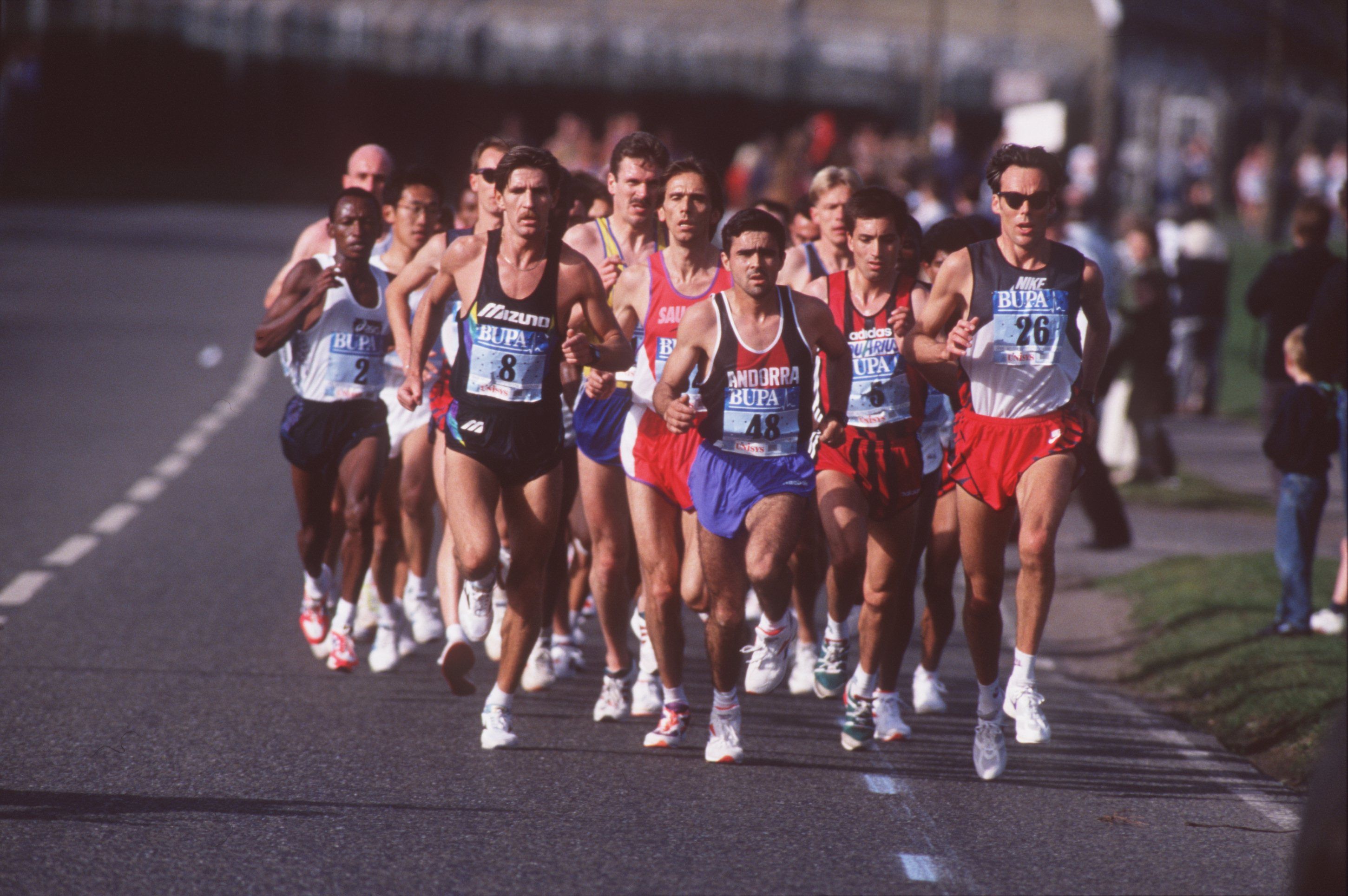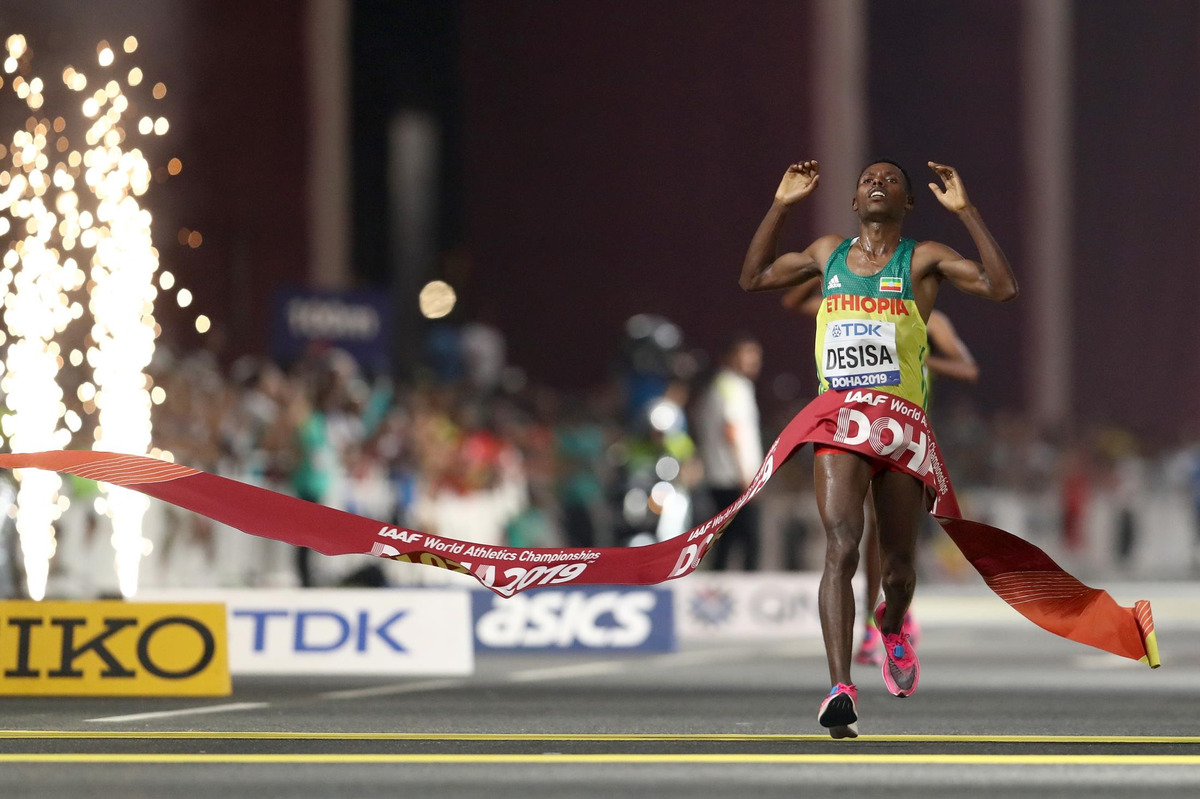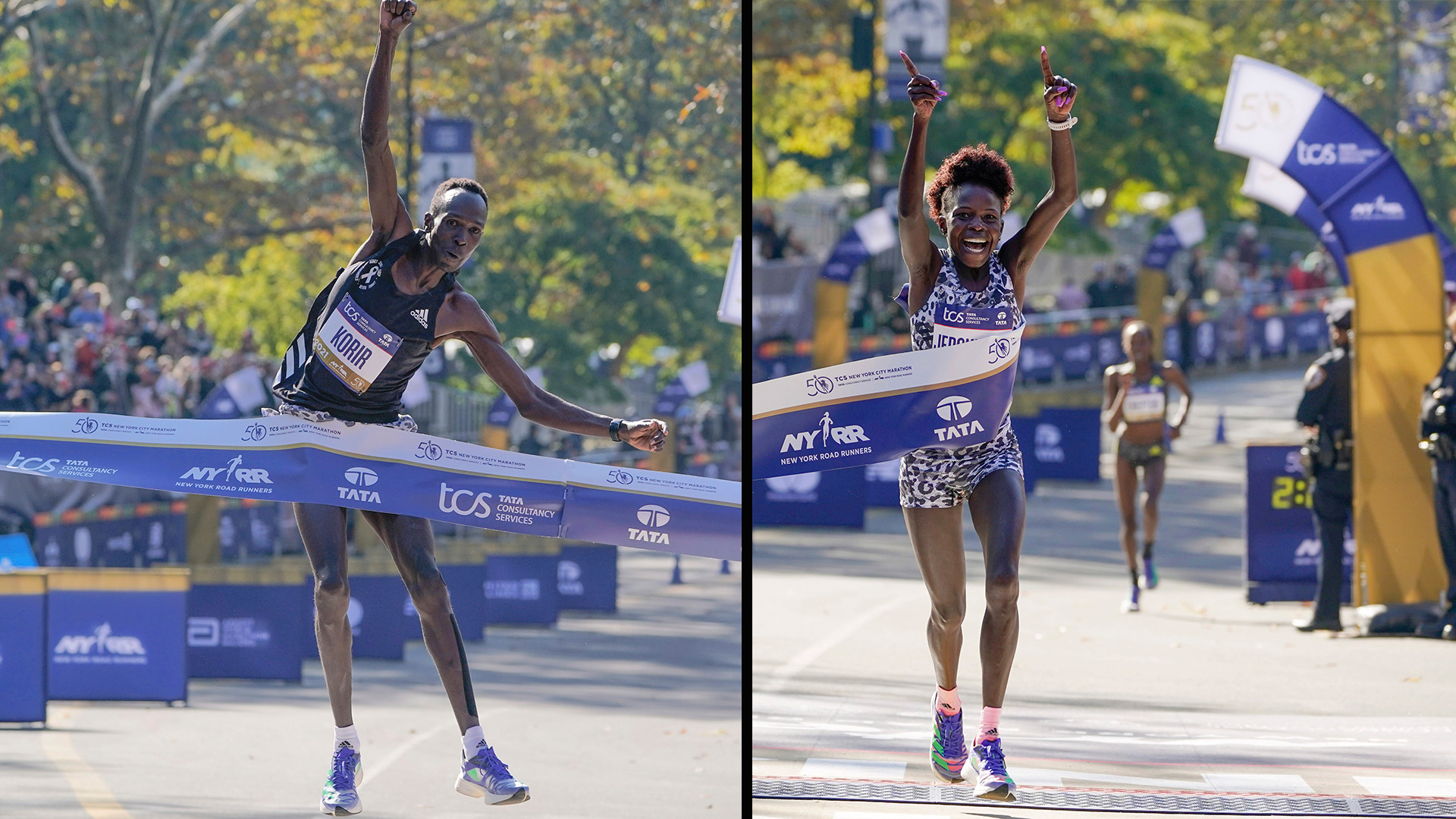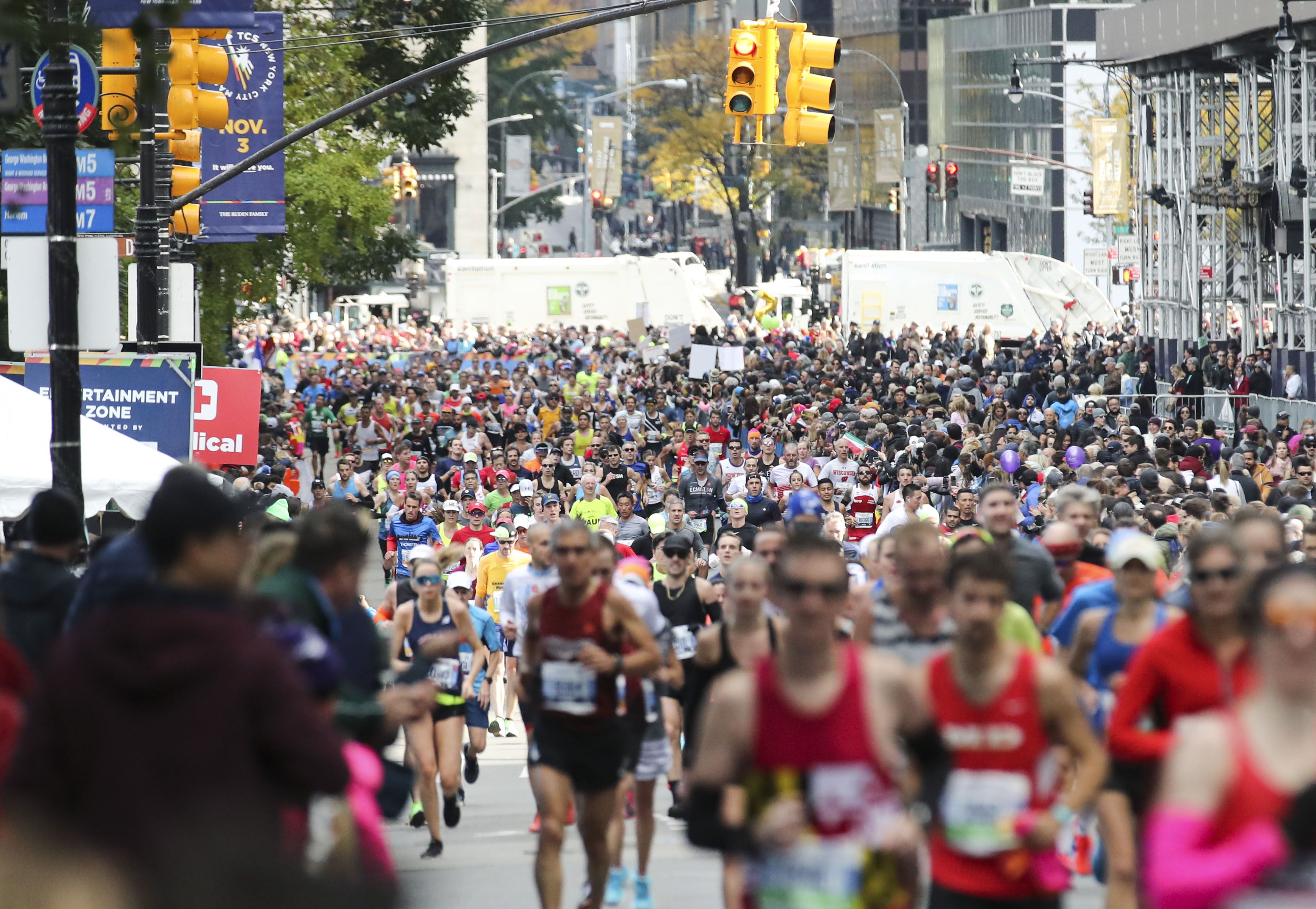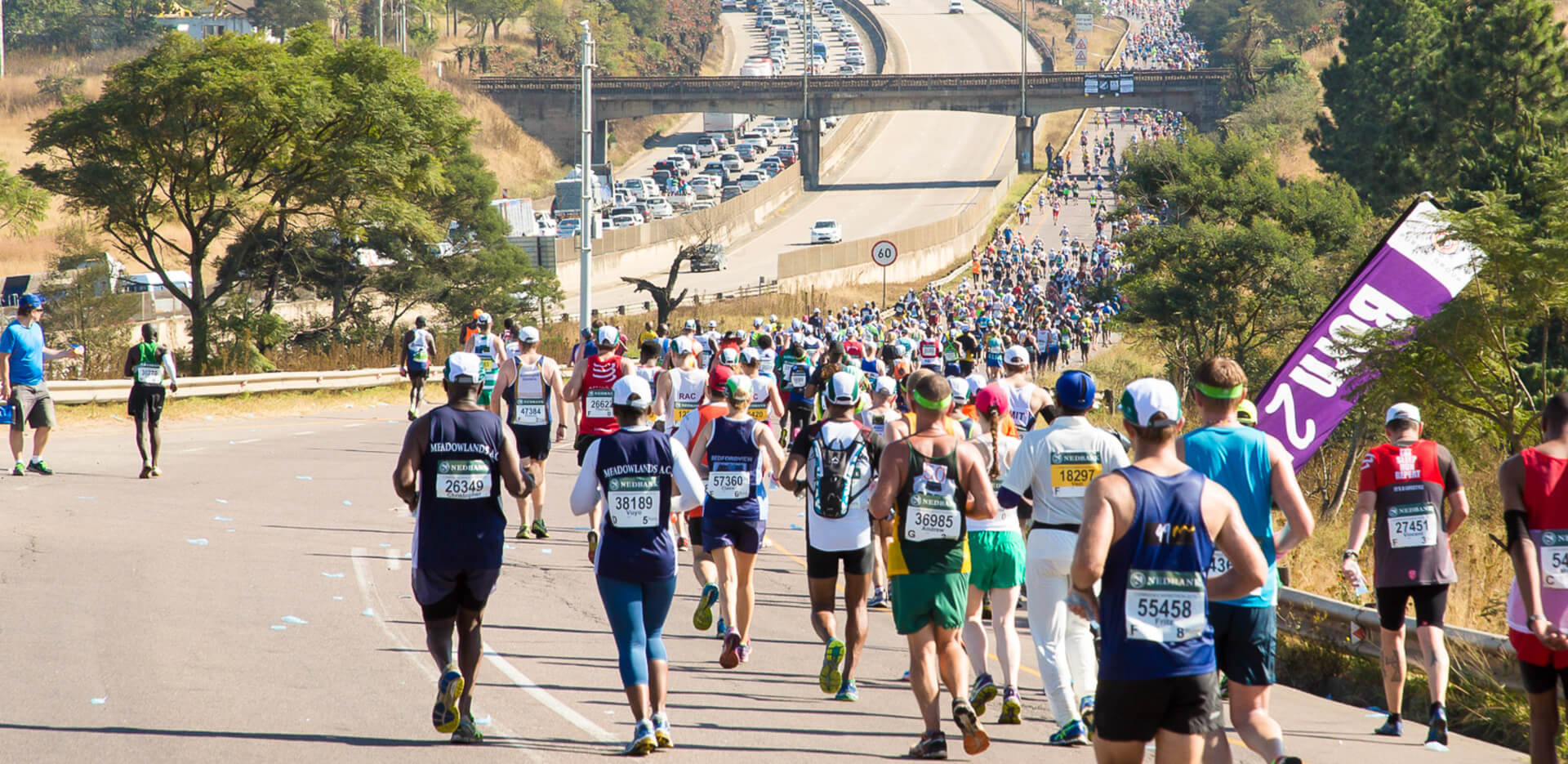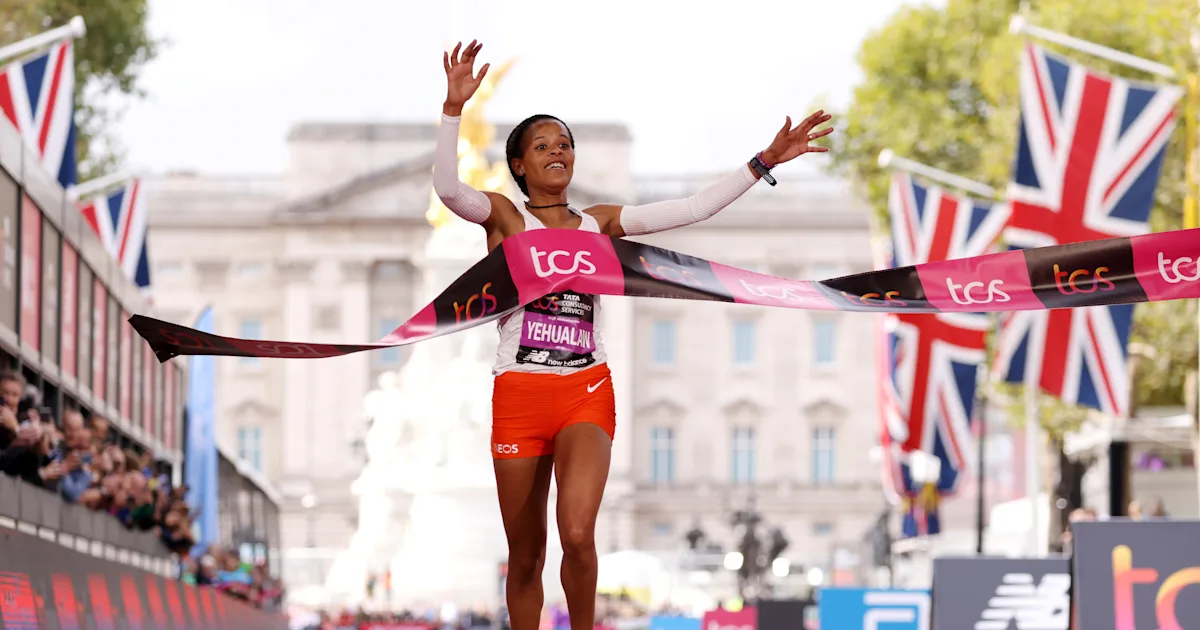

Featured
When Was The 2015 London Marathon
Modified: January 22, 2024
Find out when the highly anticipated London Marathon 2015 will take place and be a part of this featured running event in the heart of the city.
London Marathon 2015 Schedule
The London Marathon is one of the most prestigious and highly anticipated running events in the world. With thousands of participants from around the globe, the race draws in massive crowds and generates a tremendous amount of excitement. If you are planning on being a part of the London Marathon 2015, it is important to familiarize yourself with the schedule of events to ensure that you don’t miss any of the action.
The London Marathon 2015 is set to take place on April 26th, 2015. The event kicks off bright and early at 9:00 am with the famous wheelchair race, where elite athletes compete for the title. Following the wheelchair race, the professional women’s race starts at 9:15 am. This is an incredible opportunity to witness some of the fastest female marathon runners in the world as they compete for victory.
At 10:00 am, the professional men’s race begins. The anticipation is high as seasoned athletes vie for the top spot on the podium. This is a truly exhilarating event, as the world’s best marathon runners push their physical limits in a bid to be crowned champion of the London Marathon.
For those participating in the mass participation event, the race starts at 10:10 am. The course takes runners through the iconic landmarks of London, including the Tower Bridge, the Cutty Sark, and the Mall. It is truly an unforgettable experience, as you join thousands of others in their pursuit of personal achievement and the joy of crossing the finish line.
Throughout the day, various supporting events and activities are taking place along the race route. Entertainment stages, live music, and cheering zones create an electric atmosphere, motivating runners and spectators alike. This is a perfect opportunity for family and friends to show their support, offering words of encouragement and cheering you on as you conquer the 26.2-mile challenge.
As the day progresses, the atmosphere becomes even more festive. The final finishers of the London Marathon 2015 are greeted with thunderous applause and a sense of accomplishment. The celebrations continue well into the evening with a post-race party, where participants can unwind, share their stories, and revel in the satisfaction of completing one of the most iconic marathons in the world.
So mark your calendars and make sure you are ready for the London Marathon 2015. With a schedule packed with excitement and anticipation, it is an event you won’t want to miss. Lace up your running shoes, join the exhilarating crowd, and get ready to make history at the London Marathon 2015.
The History of London Marathon
The London Marathon has a rich and fascinating history that spans several decades. Established in 1981, the event has grown exponentially in popularity, attracting elite athletes, amateurs, and spectators alike from all corners of the globe.
The idea for the London Marathon was conceived by Chris Brasher, a former Olympic athlete, and journalist for The Observer. Inspired by the New York City Marathon, Brasher envisioned a similar event in London that would not only provide a platform for competitive running but also raise funds for charitable causes.
The inaugural London Marathon took place on March 29th, 1981, with over 20,000 participants gathered at Greenwich Park. The race, which started with a single gunshot fired by Princess Diana, quickly captured the imagination of the nation and established itself as a major international sporting event.
Since its humble beginnings, the London Marathon has continued to grow in scale and significance. It has become renowned for its iconic course, which showcases the city’s most famous landmarks, including the Tower Bridge, the Houses of Parliament, and Buckingham Palace.
Over the years, the London Marathon has played host to countless memorable moments and record-breaking performances. In 2002, Paula Radcliffe set the women’s world record with an incredible time of 2 hours, 15 minutes, and 25 seconds. In 2019, Eliud Kipchoge made history by becoming the first person to complete a marathon in under 2 hours, although his record did not count as an official world record due to the special conditions of the event.
The London Marathon is not just about elite athletes and world records; it is also a celebration of human endurance and the triumph of the human spirit. The race attracts runners from all walks of life, each with their own personal stories and motivations. The inclusive nature of the event is one of its most endearing qualities, as it brings together people from diverse backgrounds, united in their shared passion for running.
In addition to its sporting prowess, the London Marathon has become an incredible fundraising platform for numerous charities. Since its inception, the event has raised an astonishing amount of money for various charitable causes, making a significant impact on the lives of countless individuals and communities.
Today, the London Marathon continues to shine as one of the most prestigious and highly anticipated marathon events in the world. It has become an iconic symbol of athletic achievement, humanitarianism, and the indomitable human spirit.
As we look back on the history of the London Marathon, it is evident that this event has transcended its original vision and become a global phenomenon. It stands as a testament to the power of sport, community, and the pursuit of personal excellence. The London Marathon is not just a race; it is a celebration of the human spirit and an inspiration to millions.
London Marathon Course Overview
The London Marathon course is renowned for its scenic and iconic route, taking participants on a journey through the heart of the city. The 26.2-mile course showcases the best of London, including its historic landmarks, vibrant neighborhoods, and enthusiastic spectators lining the streets.
The course starts in Greenwich Park, a sprawling green space that provides a picturesque backdrop for the beginning of this epic race. Runners make their way towards the River Thames, crossing the iconic Tower Bridge at around the 12-kilometer mark. This is a highlight of the course, offering breathtaking views of the city skyline and a surge of energy from the crowds.
Continuing along the course, participants pass through the diverse neighborhoods of Bermondsey and Rotherhithe, where residents come out in full force to support the runners. The atmosphere is electric, with music blaring, cheers echoing, and high-fives exchanged with spectators along the way.
At the halfway point, runners encounter the famous Cutty Sark, a historic sailing ship that serves as a landmark and an inspiration to keep pushing forward. From here, the course winds through Surrey Quays and Canada Water, before entering the bustling streets of Canary Wharf.
Canary Wharf is a vibrant business district, and despite the lack of residential crowds, the energy is palpable as thousands of spectators gather to cheer on the runners. The towering skyscrapers serve as a dramatic backdrop, and the cheers and encouragement from the crowds provide a much-needed boost of motivation.
As the course heads inland, runners pass through the communities of Limehouse and Poplar, where enthusiastic spectators create a party-like atmosphere. The noise and support are infectious, helping participants stay focused and driven towards the finish line.
The final few miles take runners along the Embankment, with the River Thames on one side and spectacular views of the London Eye and Big Ben on the other. The sense of accomplishment grows with each step as runners approach the grand finale at Buckingham Palace.
The last stretch of the course passes through St. James’s Park, where the crowds become even denser, cheering and applauding the exhausted yet determined athletes. The finish line, located on The Mall, is a sight to behold as participants sprint towards their goal, fueled by the cheers of the crowds and the knowledge that they are about to complete an incredible feat.
Completing the London Marathon course is not just about physical endurance; it is a sensory experience filled with history, culture, and the unwavering support of thousands of spectators lining the streets. The course gives runners an opportunity to showcase their determination and witness the beauty of London from a unique perspective.
Whether you are a professional athlete chasing a personal best or a first-time runner looking to complete your first marathon, the London Marathon course offers a truly memorable and inspiring experience that will stay with you long after you cross the finish line.
Training for London Marathon 2015
Preparing for the London Marathon requires dedication, discipline, and careful training to ensure you are physically and mentally prepared for the 26.2-mile challenge. Whether you are an experienced runner or a novice, having a comprehensive training plan is essential to help you achieve your goals and cross that finish line with pride.
Training for a marathon is a gradual process that typically spans several months. It is crucial to gradually increase your mileage and build your endurance over time to avoid injury and burnout. A good starting point is to establish a base level of running fitness by comfortably running 3-4 times per week for at least 30 minutes each time.
As you progress, gradually increase the distance of your long runs, aiming to complete one long run per week. This run should be at a slower pace than your regular runs, focusing on building endurance rather than speed. Plan to increase your long run distance by about 10% each week to allow your body to adapt to the increasing demands.
Incorporating speed work into your training is also essential to improve your overall performance. Interval training and tempo runs can help increase your pace and build cardiovascular strength. These workouts involve alternating between periods of intense effort and recovery to simulate the demands of the marathon race.
Don’t neglect strength training and cross-training exercises as part of your overall training plan. Strengthening your muscles, especially your core and legs, can improve your running form and reduce the risk of injury. Cross-training activities such as cycling, swimming, or yoga can help improve your overall fitness and provide variety to your training routine.
It’s important to listen to your body and allow for adequate rest and recovery. Building rest days into your training schedule will allow your muscles to repair and strengthen. Good nutrition and hydration are also key components of your training plan, providing your body with the necessary fuel and nutrients to perform at its best.
Consider joining a running group or finding a training partner to stay motivated and accountable throughout your training journey. Having someone to train with can make those long runs more enjoyable and provide additional support and encouragement.
As race day approaches, make sure to taper your training. Tapering involves gradually reducing your mileage in the weeks leading up to the marathon to allow your body to fully recover and be in peak condition on race day.
Lastly, don’t forget to enjoy the process. Training for a marathon is a significant achievement in itself, and the London Marathon provides a unique opportunity to experience the city’s vibrant atmosphere and interact with runners from around the world. Embrace the journey, stay committed to your training plan, and savor every step as you prepare to take on the London Marathon 2015.
Essential Items to Pack for London Marathon
Preparing for the London Marathon goes beyond just training; it also involves packing the right gear and essentials to ensure a comfortable and successful race day experience. Here are some essential items to pack for the London Marathon 2015:
- Running Shoes: Invest in a pair of well-fitting, broken-in running shoes to provide the necessary support and reduce the risk of blisters or injuries. Make sure to test them out during your training runs to ensure they are comfortable and suitable for the marathon distance.
- Appropriate Clothing: Dress in lightweight, moisture-wicking apparel that is suitable for the weather conditions on race day. Consider layers to account for temperature changes, and don’t forget essentials like socks and a supportive sports bra.
- Race Number and Timing Chip: Ensure that you have your race number and timing chip safely attached to your running gear. These items are essential for official timing and race identification.
- Hydration System: Carrying a handheld water bottle, hydration belt, or using a hydration pack is crucial for staying hydrated during the marathon. Be aware of the water stations along the course, but having your own supply can be more convenient.
- Nutrition and Energy Gels: Pack your preferred fuel sources, such as energy gels, chews, or sports drinks, to replenish your energy levels during the race. Practice with these items during your training to ensure they work well with your body.
- Sunscreen and Hat: Protect yourself from the sun by applying sunscreen generously before the race and wearing a hat or visor to shield your face and eyes from direct sunlight.
- Body Glide or Anti-Chafing Products: Prevent friction and chafing by applying body glide or other anti-chafing products to areas prone to irritation, such as underarms, inner thighs, and nipples.
- First Aid Supplies: Pack some basic first aid supplies, including band-aids, blister pads, and pain relief medication, in case of any minor injuries or discomfort during the race.
- Extra Clothing and Rain Gear: Check the weather forecast and pack extra layers or a waterproof jacket in case of rain or unexpected weather changes. This will ensure you stay comfortable and dry throughout the race.
- Personal Items: Bring a small bag or belt to carry personal items such as your phone, ID, emergency contact information, and some money for emergencies or post-race needs.
Remember to pack these items well in advance to avoid any last-minute stress. Double-check your packing list to ensure you have everything you need, and consider making a checklist to tick off each item as you pack.
Being prepared with the right gear and essentials for the London Marathon will contribute to a more enjoyable and successful race day experience. Take the time to pack wisely and thoughtfully, and you’ll be well-equipped to conquer the 26.2-mile challenge with confidence.
Tips for Spectators at London Marathon
The London Marathon is not only an incredible experience for the participants, but also for spectators who come out to support and cheer on the runners. If you plan on being a spectator at the London Marathon 2015, here are some helpful tips to ensure you make the most of this unforgettable event:
- Plan Your Viewing Spot: Study the course map and plan ahead to find the best viewing spot. Consider locations near iconic landmarks, such as Tower Bridge, Buckingham Palace, or the finishing line on The Mall. Arrive early to secure a good viewing position.
- Bring Signs and Banners: Show your support and create some excitement by making signs or banners to cheer on the runners. Personalized messages can provide a huge boost to the participants, who often appreciate the extra encouragement.
- Stay Hydrated and Bring Snacks: The marathon is a long event, so make sure you stay hydrated and bring snacks to keep your energy levels up. Pack water bottles and snacks, and consider local food vendors along the course for a tasty treat.
- Engage with the Runners: Interact with the runners by cheering, shouting encouraging phrases, and high-fiving them as they pass by. Your support and enthusiasm can greatly uplift their spirits and help them stay motivated.
- Look Out for Friends and Family: If you know someone participating in the race, find out their estimated time of arrival at certain points along the course. Look out for their race number or personalized gear, and be ready to cheer them on when they run by.
- Enjoy the Entertainment and Atmosphere: The London Marathon features live music, entertainment stages, and cheer zones along the course. Take the time to enjoy these special moments, dance to the music, and experience the vibrant atmosphere.
- Be Mindful of the Runners’ Space: While you want to be as close to the action as possible, be mindful of the runners’ space. Avoid stepping onto the course or obstructing the runners’ path. Give them enough room, especially near the water stations or when they are fatigued.
- Stay Informed: Keep track of the race progress through official race updates and announcements. Familiarize yourself with any route changes or alternative viewing points to ensure you don’t miss any of the action.
- Spread Positivity and Support: The London Marathon is about more than just the runners; it’s about the collective spirit of camaraderie and support. Spread positivity, encourage others, and inspire fellow spectators to cheer as loudly as possible.
- Capture the Moment: Don’t forget to bring your camera or smartphone to capture the memorable moments of the race. Take photos of your favorite runners, the iconic landmarks, and the bustling atmosphere to relive the experience later on.
Being a spectator at the London Marathon is a unique opportunity to witness the determination, resilience, and sheer joy of the runners. By following these tips, you can enhance the overall race experience for both yourself and the participants, making it an unforgettable day for all.
London Marathon 2015 Race Day Guide
Race day at the London Marathon is an exhilarating experience, whether you are participating in the race or spectating from the sidelines. To make the most of this incredible event, here is a race day guide for the London Marathon 2015:
- Arrive Early: It’s crucial to arrive at the start area early to allow time for bag drop-off, using the facilities, and finding your designated starting pen. Aim to arrive at least an hour before the race start to avoid any last-minute rush.
- Follow the Race Day Schedule: Familiarize yourself with the race day schedule, including the start times for different races and any pre-race ceremonies. This will help you plan your itinerary and ensure you don’t miss any important moments.
- Warm-up and Stretch: Before the race, take the time to warm up your muscles and perform some gentle stretching exercises to prepare your body for the physical demands of the marathon. This will help improve your performance and reduce the risk of injury.
- Stay Hydrated and Fuelled: Ensure you are well-hydrated leading up to the race and continue to drink fluids throughout the event. Take advantage of the water and fuel stations along the course to replenish your energy levels and stay hydrated.
- Listen to Your Body: Pay attention to how you feel during the race. If you experience any discomfort or pain, listen to your body and adjust your pace accordingly. Don’t be afraid to take short walking breaks if needed to recover and conserve energy.
- Pace Yourself: It’s easy to get caught up in the excitement of the race and start too fast. Pace yourself according to your predetermined race plan, and avoid pushing too hard in the early stages. Remember, it’s a marathon, not a sprint.
- Make Use of Spectator Support: Take advantage of the incredible support from spectators along the course. Their cheers, encouragement, and high-fives can provide a tremendous boost to your motivation and morale. Engage with the crowd, smile, and enjoy the uplifting atmosphere.
- Take in the Sights: The London Marathon course offers magnificent views of the city’s iconic landmarks. Don’t forget to take a moment to appreciate the scenery, whether it’s crossing Tower Bridge, passing through impressive neighborhoods, or running alongside the River Thames.
- Maintain a Positive Mindset: Mental stamina plays a significant role in marathon running. Stay positive and focused, especially during challenging parts of the race. Use positive affirmations, visualize your success, and draw inspiration from both the crowd and fellow runners.
- Enjoy the Finish Line: As you approach the finish line on The Mall, soak in the moment and revel in the incredible achievement of completing the London Marathon. Lift your arms, smile, and celebrate your well-deserved accomplishment.
After crossing the finish line, collect your finisher’s medal, grab some water and snacks, and take the time to stretch and cool down. Congratulate your fellow runners, thank the spectators, and relish in the sense of accomplishment that comes with finishing one of the world’s most famous marathons.
By following this race day guide, you can make the most of your London Marathon 2015 experience and create lasting memories of this extraordinary event.
Post-race Recovery and Celebration
Crossing the finish line of the London Marathon is an incredible achievement, but the race journey doesn’t end there. Proper post-race recovery is essential to facilitate healing, restore your body’s balance, and celebrate your accomplishment. Here are some post-race recovery and celebration tips for the London Marathon 2015:
- Rehydrate: After completing the marathon, replenish your fluid levels by drinking water or a sports drink. This will help restore electrolyte balance and aid in the recovery process. Continue hydrating throughout the day to ensure proper rehydration.
- Refuel with Nutritious Meals: Treat your body to a well-rounded, balanced meal that includes carbohydrates, protein, and healthy fats. This will assist in replenishing glycogen stores, repairing muscle tissue, and promoting overall recovery. Include plenty of fruits and vegetables to provide essential vitamins and minerals.
- Stretch and Cool Down: Engage in some gentle stretching exercises and a light cool-down jog or walk to help prevent muscle stiffness and aid in the removal of waste products that accumulate during the race. This will also facilitate muscle recovery and prevent post-race soreness.
- Use Contrast Therapy: Alternate between hot and cold therapy to reduce inflammation and improve circulation. You can take a warm bath or shower followed by a cold shower or ice bath. This technique can help minimize swelling and promote muscle recovery.
- Elevate Your Legs: Elevate your legs to reduce swelling and improve blood flow. Lie down and prop your legs up against a wall or use pillows to elevate them above the level of your heart. This can help alleviate leg fatigue and promote efficient recovery.
- Get Adequate Rest: Allow your body time to rest and recover by getting plenty of sleep. Sleep is crucial for optimal recovery, as it allows your body to repair and regenerate tissues that were stressed during the race. Aim for at least 7-9 hours of quality sleep per night.
- Reflect and Celebrate: Take the time to reflect on your accomplishments and celebrate your success. Share your experience with friends and family, and bask in the pride and fulfillment that comes with completing the London Marathon. Treat yourself to a special meal, indulge in a massage, or plan a small celebration to reward yourself.
- Plan Your Next Goal: Use the post-marathon period to set new goals and continue your running journey. Whether it’s tackling another marathon, improving your personal best, or exploring different race distances, having a new goal can help maintain your motivation and keep you engaged in your running journey.
It’s important to remember that recovery is a gradual process, and every individual may experience it differently. Listen to your body, be patient, and allow yourself time to fully recover before engaging in intense training or racing again.
By taking care of your body, reflecting on your achievement, and planning for the future, you can ensure a successful post-race recovery and celebration after the London Marathon 2015.
Notable Results and Records from London Marathon
The London Marathon has a storied history of producing outstanding performances and setting remarkable records. Over the years, the race has witnessed numerous memorable moments and exceptional achievements. Here are some notable results and records from the London Marathon:
- Men’s World Record: One of the most iconic moments in London Marathon history occurred in 2019 when Eliud Kipchoge of Kenya shattered the men’s world record with a stunning time of 2 hours, 2 minutes, and 37 seconds. This incredible feat solidified Kipchoge’s status as one of the greatest marathon runners of all time.
- Women’s World Record: Paula Radcliffe of Great Britain cemented her place in marathon history at the 2003 London Marathon. Radcliffe set an astonishing women’s world record with a time of 2 hours, 15 minutes, and 25 seconds. Her record-breaking performance remains unbeaten to this day.
- Paralympic World Records: The London Marathon has also been a platform for impressive paralympic performances. David Weir of Great Britain holds the record for the most wheelchair victories, winning the men’s wheelchair race a remarkable eight times between 2002 and 2012.
- Athletic Feats: The London Marathon has witnessed many incredible athletic achievements. In 2015, Eliud Kipchoge and Wilson Kipsang engaged in a thrilling duel, with Kipchoge prevailing and setting a new course record of 2 hours, 4 minutes, and 42 seconds.
- Celebrity Runners: The London Marathon has attracted numerous celebrity participants over the years. Famous faces such as Sir Richard Branson, Sir Mo Farah, and Chris Evans have laced up their running shoes and completed the challenging course, adding to the prestige and excitement of the event.
- Charitable Fundraising: The London Marathon is also known for its significant charitable impact. Since its inception, the event has raised billions of pounds for various charitable causes. Runners from all walks of life have used the race as an opportunity to raise funds and create awareness for meaningful organizations.
The London Marathon continues to captivate audiences with its exceptional athletes, thrilling finishes, and the overall spirit of unity and achievement. It is a testament to the triumph of the human spirit and the pursuit of excellence.
Each London Marathon brings excitement as records are broken, new stories are written, and personal goals are achieved. The event serves as inspiration for both elite athletes and everyday runners, encouraging them to push their limits, chase their dreams, and celebrate the joy of running.
As the London Marathon continues to evolve and new chapters are written each year, it will undoubtedly remain an iconic and influential race in the world of marathon running.
London Marathon 2015 Charity Partnerships
The London Marathon has always had a strong commitment to charitable initiatives, with thousands of runners participating each year to raise funds for various causes. The London Marathon 2015 was no exception, with several notable charity partnerships making a significant impact. Here are some of the charity partnerships that were highlighted during the London Marathon 2015:
- Virgin Money Giving: As the official fundraising partner of the London Marathon, Virgin Money Giving played a crucial role in supporting runners’ efforts to raise funds for their chosen charities. The platform provided an easy and secure way for participants to collect donations and track their fundraising progress.
- The Teenage Cancer Trust: The Teenage Cancer Trust was one of the primary charity partners for the London Marathon 2015. The organization works tirelessly to improve the lives of young people with cancer by providing specialized care and support. Runners who chose to support the Teenage Cancer Trust raised funds that directly contributed to the organization’s valuable work.
- The British Heart Foundation: The British Heart Foundation, a leading charity dedicated to fighting heart disease, was also a prominent charity partner in the London Marathon 2015. Participants who ran for the British Heart Foundation not only raised crucial funds but also raised awareness about heart health and the importance of cardiovascular research and care.
- The NSPCC: The NSPCC (National Society for the Prevention of Cruelty to Children) is an organization committed to protecting children from abuse and providing them with support. The NSPCC also had a strong presence in the London Marathon 2015, with runners highlighting the important work of the charity and raising funds to help their efforts.
- The Alzheimer’s Society: Alzheimer’s Society is a leading charity focused on improving the lives of people affected by dementia and funding research for a cure. Runners who partnered with the Alzheimer’s Society not only raised funds but also raised awareness about the impact of dementia on individuals and their families.
These are just a few examples of the many incredible charity partnerships that were featured during the London Marathon 2015. Runners had the opportunity to support a wide range of causes, including those focusing on health, education, social justice, and many more.
The London Marathon offers participants a unique platform to raise funds and create awareness for charities close to their hearts. The support and generosity of the London Marathon community have helped make a significant difference in the lives of countless individuals and communities.
Charity partnerships are an integral part of the London Marathon, further showcasing the event’s commitment to making a positive impact beyond the race itself. The combination of physical endurance and charitable giving creates a powerful synergy, inspiring runners and spectators alike to come together and make a difference in the world.
London Marathon 2015 FAQs
The London Marathon is a highly anticipated event that attracts runners, spectators, and enthusiasts from all over the world. As such, there are often common questions people have regarding the logistics, registration, training, and other aspects of the marathon. Here are some frequently asked questions (FAQs) about the London Marathon 2015:
- When is the London Marathon 2015? The London Marathon 2015 took place on April 26th, 2015.
- How do I register for the London Marathon 2015? Registration for the London Marathon typically opens several months in advance. Visit the official London Marathon website to find out the registration process and necessary details.
- Are there any qualifying times for the London Marathon 2015? Qualifying times were not required for the London Marathon 2015. However, there may be specific entry criteria for certain elite or championship categories.
- How many participants were there in the London Marathon 2015? The London Marathon 2015 had more than 37,000 participants, including both elite and mass participants.
- Can I transfer my entry or defer my place to the following year? The rules and policies regarding entry transfers and deferrals may vary from year to year. Check the official London Marathon website for the specific guidelines and instructions for the London Marathon 2015.
- What is the course time limit for the London Marathon 2015? The course time limit for the London Marathon 2015 was 8 hours and 30 minutes. Participants were required to complete the race within this time frame.
- Is there a minimum age requirement to participate in the London Marathon 2015? The minimum age requirement for the London Marathon 2015 was 18 years old on race day.
- Can I wear headphones during the London Marathon 2015? The use of headphones during the London Marathon 2015 was permitted, but participants were advised to be cautious and aware of their surroundings for safety reasons.
- What was the prize for the winners of the London Marathon 2015? The London Marathon 2015 offered a substantial prize purse for the top finishers in the elite categories, including both monetary rewards and prestigious titles.
- Was doping testing conducted in the London Marathon 2015? Yes, the London Marathon has a comprehensive anti-doping program in place. Random drug testing was conducted during the London Marathon 2015 to ensure a fair and level playing field.
If you have any further questions or need more specific information about the London Marathon 2015, it’s advisable to visit the official London Marathon website or contact the event organizers directly. They will be able to provide the most up-to-date and accurate information regarding the marathon.
The London Marathon is an extraordinary event that brings together runners, spectators, and the spirit of community. Whether you’re participating or supporting from the sidelines, the London Marathon 2015 was a memorable milestone in the event’s history.
